How AI Image Generation Is Transforming Employer Branding
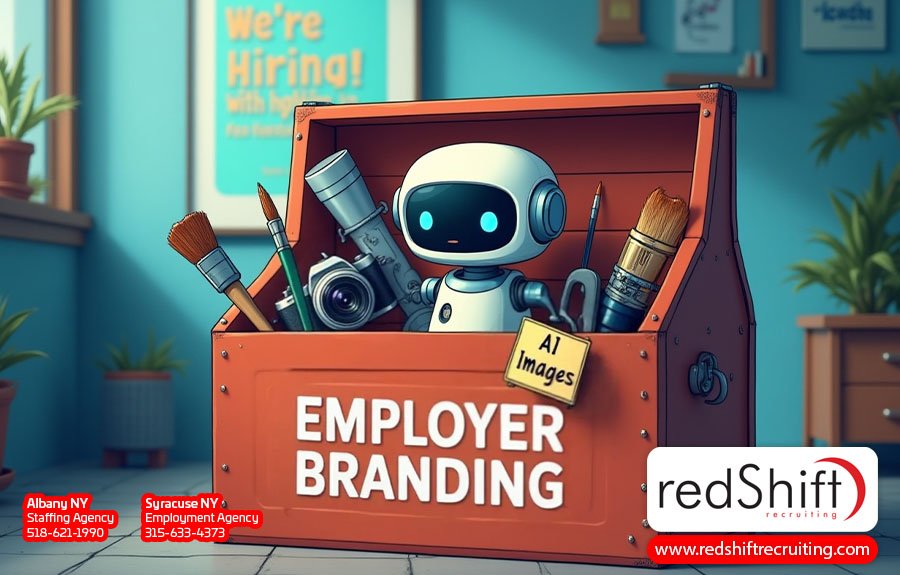
You’re writing a blog post to educate people about a topic related to your service. Or building a new page on your website about your hiring process. Or revamping your homepage so it doesn't look like you haven’t updated it since 2001.
Then you spend 20 minutes scrolling stock photos, looking for an image that fits your content. Okay—anything that fits. You’ve been at it so long you're starting to recognize the models and photoshoot locations, and you still can’t find something that’s actually appropriate for your topic. So you settle on a vaguely relevant image of people high-fiving in an office. . . and one week later, you see that exact same image on someone else's website.
Visuals matter—especially in an era where people scroll quickly, skim headlines, and barely glance at that landing page or blog article you agonized over. Images stand out: they’re often the first thing potential candidates see, and they shape how people perceive your company’s values, tone, and professionalism before they read a single word.
But custom visuals are expensive, and stock photos rarely feel personal, specific, or on-brand. That’s where AI comes in.
In this article, we explore how AI image generation is transforming employer branding—giving small teams and large organizations alike a new way to create relevant, engaging visuals. We’ll cover what AI image generation actually is, when it works well (and when it doesn’t), and how to use it effectively without sacrificing authenticity.
What Is AI Image Generation?
AI image generation refers to the process of creating original images from text prompts using generative AI—a category of artificial intelligence that learns patterns in data to produce new content. Tools like Midjourney, DALL·E, and Stable Diffusion can turn a short description (like “diverse team collaborating in a modern workspace”) into a complete, visually polished image, often in under a minute.
These AI tools work by training on massive datasets of images and descriptions, using AI algorithms to understand the relationships between words and visuals. Some can even combine your uploaded images with custom prompts to produce branded, stylized versions of your existing content.
While early versions were glitchy or hard to use, today's AI technologies are increasingly advanced and far more accessible. Many platforms now offer intuitive interfaces, customization settings, and drag-and-drop editing, making AI-powered tools appealing to designers, marketers, and non-creatives alike. For small teams without a dedicated creative department, that accessibility makes a huge difference.
Why Visuals Matter in Employer Branding
You can write the perfect blog post, craft the most thoughtful “About Us” page, or create the best job description, but if the visuals fall flat, most people might not even read it. Images are what catch the eye. In the era of scrolling and skimming, they’re often what stops someone mid-swipe. And for many job seekers, that momentary pause is their first impression of your company’s brand identity.
That impression matters.
Employer branding is how your company presents itself as a place to work, including your reputation, your values, your culture, and what you promise employees in return. People form a judgement of your company as an employer from a wide range of sources, including job postings, social media, news sources, employee testimonials, and employee advocacy efforts. A strong employer brand sets the tone for everything from recruiting to retention strategies, and visuals play a big part in whether that tone feels consistent, modern, and real.
A well-chosen image can immediately express your company’s culture, energy, tone, and values. Whether you're aiming to appear welcoming and innovative or grounded and mission-driven, visuals set the emotional tone for how your company is perceived. When you show (not just tell) values like transparency, collaboration, and diversity and inclusion, you build trust and make your company feel more real and approachable to job seekers.
For example, representing a variety of people, roles, and settings shows your company’s commitment to equity and helps attract a broader range of potential candidates, ultimately supporting a more diverse and inclusive workforce. On the flip side, tired or generic stock photos can imply your company is impersonal or outdated, sending the wrong message before anyone reads a single word.
And let’s not forget the algorithm. Images that are visually appealing get more clicks, shares, and engagement, whether they’re embedded in your website, enhancing new blog content, or part of a hiring campaign.
When your imagery aligns with your actual workplace culture and company values, it sends a powerful message to top talent: “This is a great place to work. You belong here.”
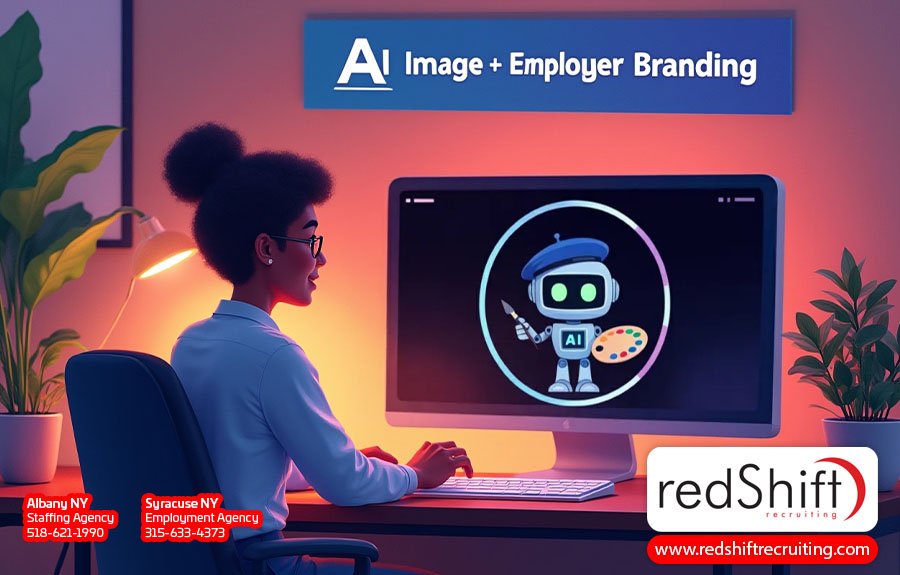
How AI Images Are Changing Employer Branding
When thoughtfully implemented, using AI in employer branding efforts can help organizations of all sizes enhance the look, feel, and impact of their content.
Smart Applications Across Your Content and Campaigns
Stock images are often too vague, off-brand, or overused, and few teams have the budget for custom photography every time they update a page or write a new blog article. That’s where AI delivers unique value. With the right approach to employer branding content creation, AI-generated visuals can support a range of initiatives, including:
-
Tailored job postings: Use prompts to reflect specific roles, departments, or workplace environments, helping your listings stand out.
-
Targeted campaigns: Build consistent, branded graphics for hiring pushes, social media, or new initiatives without requiring a full creative team.
-
Inclusive representation without clichés: Reflect a wide range of people, roles, and settings that align with your company’s values, without relying on staged or stereotypical imagery.
-
Internal communications: Add polish to internal updates, onboarding materials, or employee training with on-brand visuals that reflect your company's tone.
-
Welcoming new employees: Create personalized welcome messages or team intro graphics that add a human touch to the candidate experience and early-stage engagement.
-
Abstract or metaphorical concepts: Illustrate values like collaboration, innovation, or growth visually, reinforcing your employer value proposition with creative imagery.
-
Fast response time: Quickly generate visuals for time-sensitive needs like blog headers, hiring events, or industry trends, without design bottlenecks.
This approach gives even small or mid-sized teams the ability to produce high-quality employer branding content that looks intentional, polished, and on-brand, supporting a cohesive image across every touchpoint.
Strategic Benefits That Support Talent Acquisition Goals
Beyond flexibility and speed, AI-generated imagery can deliver measurable advantages when aligned with brand guidelines and values. Creating custom visuals helps build trust, attract top-tier talent, and reinforce what makes your company a great place to work. Great AI images can contribute to recruitment strategies that:
-
Boost talent acquisition: More relevant, high-quality imagery improves first impressions, helping your job postings attract the right candidates and increasing visibility across platforms.
-
Enhance the candidate experience: Visuals that feel personalized and modern reflect well on your company and keep candidates engaged throughout the application process.
-
Support employee engagement and retention: When your visuals reflect authentic values and culture, they create a stronger sense of identity from the start of the onboarding process to team interactions and day-to-day work.
-
Improve cross-team consistency: Provide different departments with access to a shared visual style, maintaining a consistent employer brand across job posts, internal updates, and marketing content.
-
Strengthen storytelling: AI visuals help you highlight initiatives, values, and voices, deepening the emotional connection between your company and prospective or current employees.
-
Save money while increasing output: Reduce reliance on expensive stock subscriptions or photoshoots while creating more tailored, brand-aligned visuals.
-
Drive continuous improvement: Use engagement metrics to test styles and formats, learning what resonates most with candidates and teams so you can refine your strategy over time.
In short, well-executed AI imagery doesn’t just fill space; it adds strategic value. When you align your visuals with your messaging and culture, AI becomes more than a design tool—it becomes a key part of your long-term employee engagement, employer branding, and talent acquisition strategies.
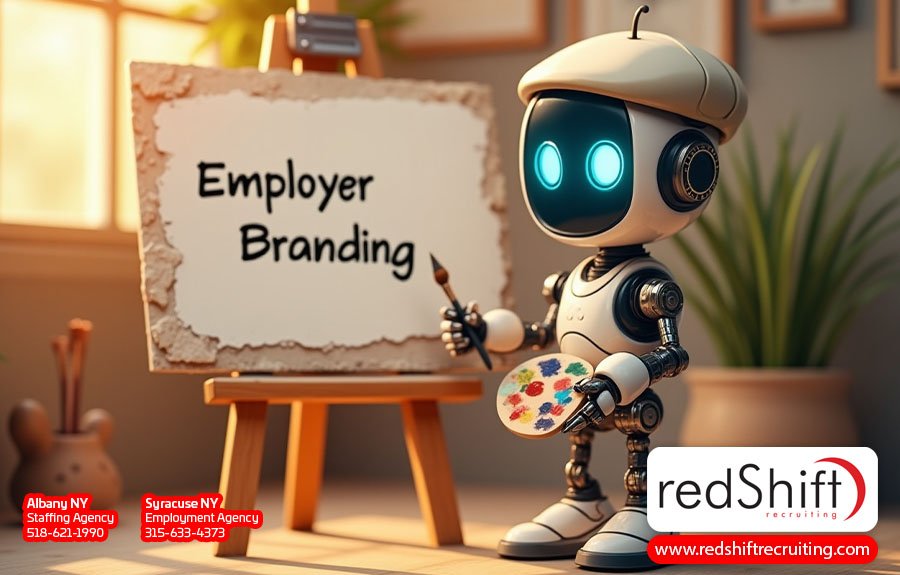
Challenges and Ethical Risks to Consider When Using AI in Employer Branding
AI image generation opens up exciting creative possibilities, but it also raises some important red flags. If you're not thoughtful about how you use these tools, the results can easily backfire.
Some AI-generated images just feel off. Getting a great AI image can be challenging. Maybe the hands have too many fingers. Maybe the smiles are just a little too... toothy. When an image feels subtly off, especially in depictions of people, it can trigger the "uncanny valley" effect and leave potential candidates confused or uncomfortable instead of engaged.
There's also the issue of bias. AI image tools are trained on massive datasets scraped from the internet, which means they can inadvertently reinforce stereotypes about gender, race, age, or ability. If you're not careful with your prompts—and not reviewing the outputs with a critical eye—you may end up undermining the very DEI values you’re trying to highlight.
Legal questions and ethical considerations are another concern. The rules around copyright, ownership, and usage rights for AI-generated content are still being developed. HR managers and employer branding teams should avoid assuming AI visuals are risk-free, especially for high-visibility campaigns.
Brand consistency can be tricky. AI gives teams freedom to experiment, but without strong design guidelines, you may end up with visuals that don’t align with your brand’s tone or style. What was meant to build credibility could end up looking scattered or amateurish.
And then there’s the deeper issue of trust. With growing public awareness of deepfakes and misinformation, overly polished or obviously synthetic images can make candidates question what’s real. Authenticity matters, especially when your goal is to build genuine relationships with top talent.
Finally, be cautious with data-driven insights. Many AI platforms offer engagement metrics or recommend popular visual styles based on performance data. But just because something gets more clicks doesn't mean it's aligned with your brand or your values. Don’t chase trends at the expense of trust, and remember that thoughtful content should always come before algorithm-pleasing visuals.
AI is a powerful tool, but like any tool, it requires human oversight, ethical consideration, and a clear strategy to use well.
Best Practices for Using AI Tools for Image Generation
AI tools can be powerful creative allies but only if used mindfully. To support your employer branding strategy without compromising your values or confusing your target audience, it's important to follow a few clear best practices (including knowing when not to use AI at all).
When AI-Generated Images Make Sense
AI-generated visuals can potentially enhance your employer branding when:
-
You’re illustrating abstract concepts like innovation, flexibility, or team dynamics.
-
Stock photos feel too generic or overused and don’t align with your brand tone.
-
You need consistent, branded images for blog headers, social posts, or hiring campaigns.
-
You want to add visual interest to internal communications or HR newsletters.
-
You’re promoting programs or initiatives (like mentorship or growth opportunities) without specific photos available.
-
You want to enhance job opportunity portals or career pages with branded, relevant images that stand out from the sea of default layouts and stock photos.
-
You’re working with limited resources and need fresh content fast, but don't have a full design team.
When (and Where) Not to Use AI-Generated Images
While AI visuals can enhance your recruitment process, they should never try to replace reality. Avoid using AI imagery in places where authenticity and human connection matter most. For example:
-
Employee recognition or spotlight posts: Whether you're celebrating accomplishments or sharing career stories, use real photos of your team, not synthetic stand-ins.
-
Press coverage or public-facing news: If you’re featured in the media, announcing a leadership hire, or opening a new location, authentic images build credibility.
-
Culture or DEI spotlights: If you're celebrating real progress or real people, your visuals should reflect them.
-
Photos of your actual office, leadership, or events: A quick phone photo is better than the most polished AI image here.
Overuse of AI images can dilute trust. When everything looks overly stylized or generic, people start to question what’s real, ultimately undermining your hiring process instead of helping it. On the other hand, poorly done AI images that look fake, uncanny, or just off can distract from your message and reflect poorly on your brand. Be mindful about where and when you're using AI, and save AI-generated visuals for content where concepts need to be illustrated or where stock photos are falling short and custom photography isn’t an option.
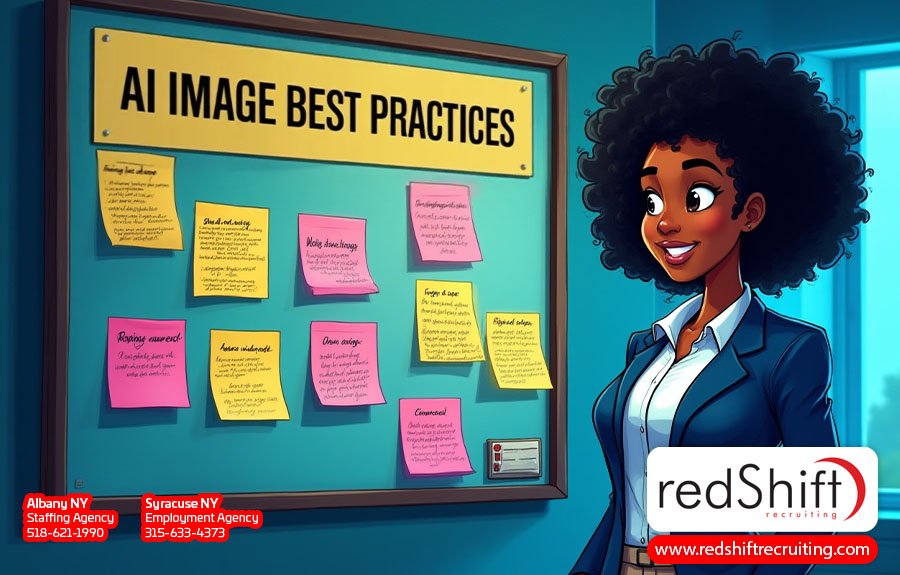
How to Use AI Image Generation Effectively
If done strategically, using AI in employer branding can help attract potential candidates by making your company feel more intentional, modern, and engaging. Here’s how to get it right:
-
Start with clear brand guidelines: Define your tone, values, and visual style. This helps guide prompt writing and ensure consistency across images. Whatever style you choose, it should be accurate and honest, matching your overall brand voice.
-
Use inclusive prompts: Don’t leave diversity to chance. Actively include varied ages, ethnicities, abilities, and environments, and always carefully review outputs for potential issues.
-
Ensure accessibility: Choose clear, high-contrast visuals that can be easily described with alt text, and avoid overly complex or cluttered designs. This ensures your employer branding remains inclusive for all users.
-
Always have humans oversee the process: AI can generate content fast, but it can’t filter for nuance or spot visual red flags. Assign someone with employer branding or design experience to guide prompt creation, review outputs, and polish final images. This human touch ensures the visuals align with your brand’s tone, values, and quality standards.
-
Don’t treat it as a shortcut: AI tools make image generation easier, but not effortless. Quality takes time. You’ll likely need to revise prompts, experiment with styles, and make hands-on edits. A careless approach leads to generic or off-putting results. If you wouldn’t publish a first-draft blog post, don’t publish a first-draft image either.
-
Test, track, and adapt: Use A/B testing and engagement data to experiment with different image styles and formats and then refine your approach. This supports continuous improvement and produces valuable insights into the types of images that resonate with your target audience.
-
Train your team: Whether it’s HR professionals, the marketing department, or a hiring manager writing a job post, make sure they understand how to use these tools effectively and ethically.
-
Be transparent when needed: Consider disclosing when images are AI-generated to avoid confusion, particularly in sensitive areas.
Ultimately, enhancing employer branding with customized imagery can help your business attract top talent while reducing reliance on stale stock images and expensive design work—but only if you put in the time and effort to do it right.
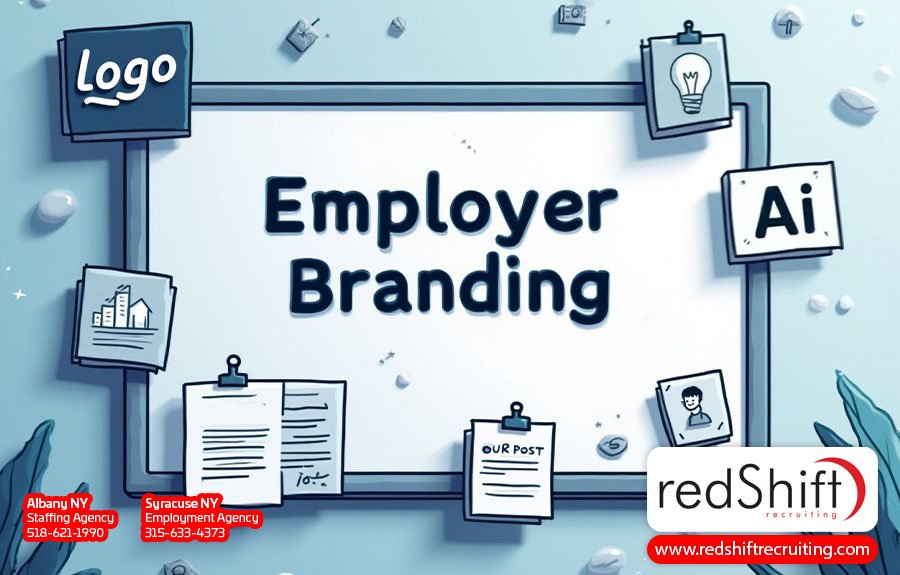
Frequently Asked Questions
What Makes an AI-Generated Image Effective for Employer Branding?
An effective AI-generated image supports your company’s brand identity while reinforcing your company’s culture and values. It should feel relevant to the content it accompanies—whether it's a job post, a blog article, or a social media update—and match your brand’s tone and style. The most compelling visuals reflect real team dynamics, convey energy or intent, and enhance storytelling. AI-powered tools can help generate these images, but the impact depends on how you use them. Clarity of purpose, strong prompts, and human review make all the difference.
Are There Legal Risks to Using AI-Generated Images on Your Website?
Yes, and it’s important to stay informed. With generative AI, ownership rights can be murky. Many platforms allow commercial use, but the rules vary—some restrict certain use cases or require attribution. Always check the licensing terms of the AI image generator you’re using, especially for public-facing recruitment materials. You should also avoid using outputs that resemble real people too closely to steer clear of likeness or identity issues. As AI-powered tools evolve, legal guidelines will become clearer, but HR professionals should treat these images like any other content asset—reviewed, sourced carefully, and documented.
How Can Small Teams Ensure AI Images Align with Their Brand Style?
Start with clear brand guidelines, such as colors, tone, and messaging, and use them to craft image prompts. Even if you don’t have an in-house designer, your team can still generate visuals that align with your talent brand. Look for consistent elements like lighting, mood, or metaphor across your AI-generated assets. Small teams can also analyze data from social posts or job ads to refine what imagery resonates most with your audience. It’s all about being intentional, not just creative.
Do Candidates React Differently to AI Images Versus Real Photography?
How candidates react to images often depends on context. For job opportunities, polished AI visuals might catch someone’s attention, but employee growth, recognition, or culture stories land best with real photography. Candidates often sense when something feels artificial, especially in content tied to personal experience. That’s why blending both is key. Use AI to illustrate abstract ideas or fill visual gaps, but rely on real team imagery to highlight team dynamics, office life, or leadership. When used with care, AI images enhance the recruitment process without replacing the human element candidates connect with most.
What Role Will AI Play in the Future of Employer Branding?
AI will increasingly support creative execution, not replace it. From custom illustrations to virtual assistants helping HR teams scale outreach, generative AI tools are making employer branding faster, more adaptive, and more personalized. They’ll help teams test visuals, analyze data, and better align content with candidate interests. But as technology continues to develop, authenticity will matter more than ever. Companies that combine automation with real insights and human storytelling will build talent brands that stand out. AI will change how companies attract talent, but people will still decide what’s worth joining.
The New Visual Language of Hiring
You don’t need a massive budget or in-house creative team to build a compelling employer brand—you just need the right approach. By leveraging AI tools for custom imagery, companies can enhance every stage of the candidate journey, from the application process to the onboarding process, with visuals that actually reflect their values. Done well, AI image generation makes employer branding more authentic, accessible, and aligned with what today’s job seekers are really looking for.
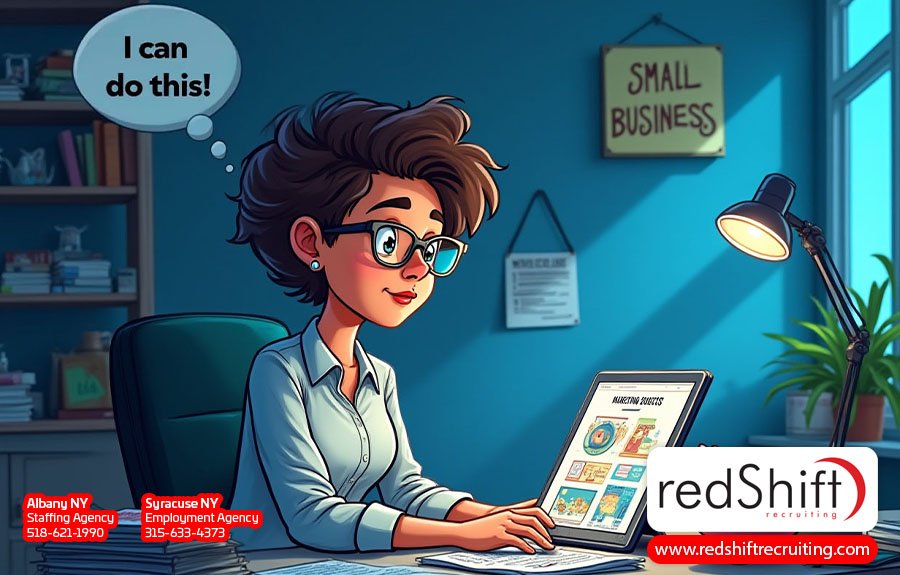

Article Author:
Ashley Meyer
Digital Marketing Strategist
Albany, NY
from Career Blog: Resources for Building a Career - redShift Recruiting https://www.redshiftrecruiting.com/career-blog/how-ai-image-generation-is-transforming-employer-branding
via redShift Recruiting
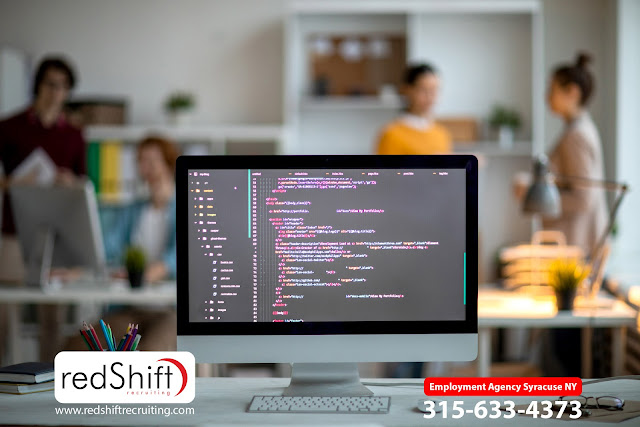
Comments
Post a Comment